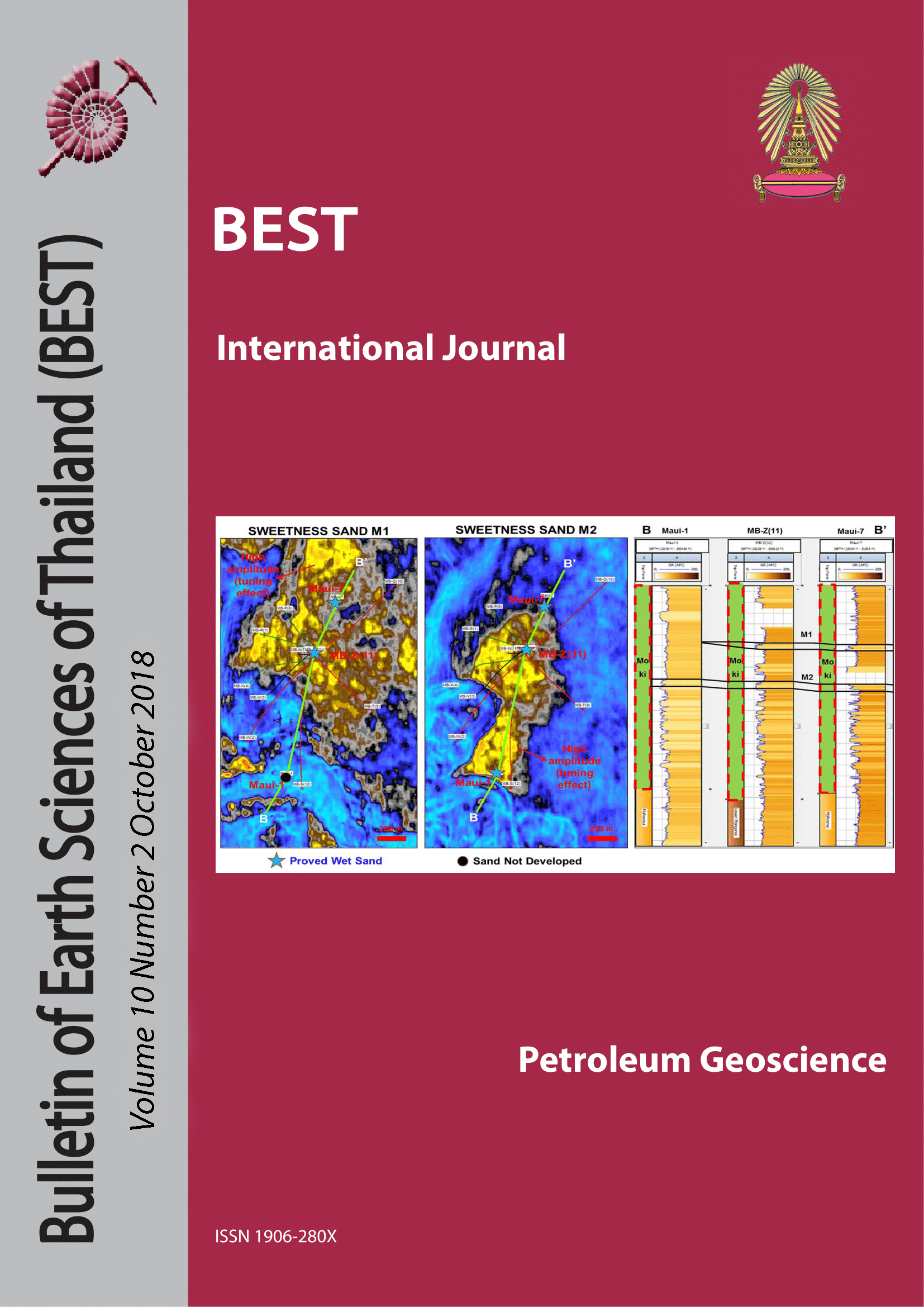The Used of Attributes for Mapping Reservoir Distribution and Identification of Reservoir Property, Maui B Field, Taranaki Basin, New Zealand
Main Article Content
Abstract
The study of reservoir distribution and property identification in Maui B Field, Taranaki Basin, New Zealand is necessary to identify future development targets. Three intervals of potential gas sands from Kapuni Group and two intervals of wet sands from Moki Formation were analyzed in this study. Well log data and post-stack seismic volumes are integrated to perform rock physics analysis, seismic attributes analysis, and time lapse seismic analysis. Rock physics analysis is applied in several wells to see the relationship between well data and seismic data. It reveals that sand within the interval of interest has lower density, lower acoustic impedance, and higher P-wave compared to shale. RMS in full amplitude and sweetness attributes helps to image the sand distribution in the study interval. Instantaneous frequency attribute does not indicate any absorption of seismic wave energy causing by hydrocarbon (gas) effect. Gas bearing sand distribution tends to be distributed only in high structures of low anticlinal relief. Moreover, several wells data proved the gas bearing sand in this anticlinal structure. By using RMS amplitude, sweetness, and semblance attributes, sand body geometry and some channel features are identified to define the depositional environment. Lastly, time lapse seismic is run by using seismic attributes results, especially sweetness attributes. This analysis indicates that the sweetness attributes cannot represent the change of reservoir property. The area at the eastern part of the field is recommended to drill for future development targets.
Article Details

This work is licensed under a Creative Commons Attribution-NonCommercial-NoDerivatives 4.0 International License.
Copyright © 2008 Department of Geology, Faculty of Science, Chulalongkorn University. Parts of an article can be photocopied or reproduced without prior written permission from the author(s), but due acknowledgments should be stated or cited accordingly.
References
Alhakeem, A., et al., 2017, Petrophysical Analyses Using Micro-Level Field of View Petrographic Images for the Kapuni Group, Taranaki Basin, New Zealand, 12 p.
Baur, J.R., 2012, Regional Seismic Attribute Analysis and Tectono-stratigraphy of Offshore South-Western Taranaki Basin, New Zealand, p.59-292.
De Bock, J.F., Perry, S., Webby, D., Goodin, B., 1991, Appraisal of the Maui-4 and Moki-1 oil discoveries PML 38144 PML 38145, Petroleum Report Series PR1800, Ministry of Economic Development.
Higgs, K.E., Strogen, D., Griffin, A., Ilg, B., Arnot, M., 2012, Reservoirs of the Taranaki Basin, New Zealand, GNS Science Data Series No. 2012/13a.
King, P., Thrasher, G., 1996, Cretaceous–Cenozoic geology and petroleum systems of the Taranaki Basin, New Zealand. Institute of Geological and Nuclear Sciences monograph 13, Lower Hutt, Institute of Geological and Nuclear Sciences Limited New Zealand.
Louise, S.G., 2008, Paleogeography of a Mid Miocene Turbidite Complex, Moki Formation, Taranaki Basin, New Zealand, p.65.
Mills, K., 2000, Hochstetter-1 Well Completion Report, Offshore Taranaki Basin, New Zealand, PEP 38460.
Ministry of Business, Innovation and Employment, 2014, New Zealand Petroleum Basins, New Zealand Petroleum & Minerals, ISSN (online): 2324-3988.


